




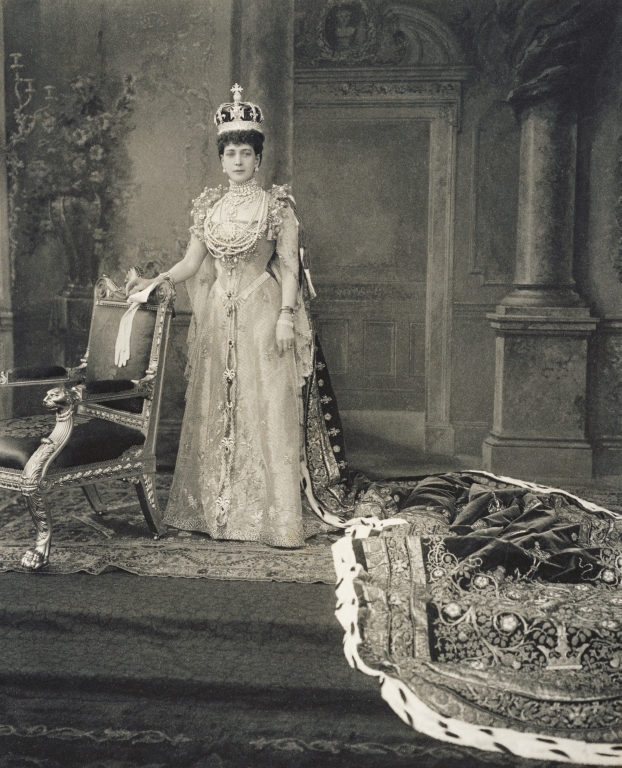 Queen Alexandra of Great Britain in her coronation robes, by W&D Downey, 1902; Acc No RCIN 2106307; Source: Royal Collection Trust, LINK
Queen Alexandra of Great Britain in her coronation robes, by W&D Downey, 1902; Acc No RCIN 2106307; Source: Royal Collection Trust, LINK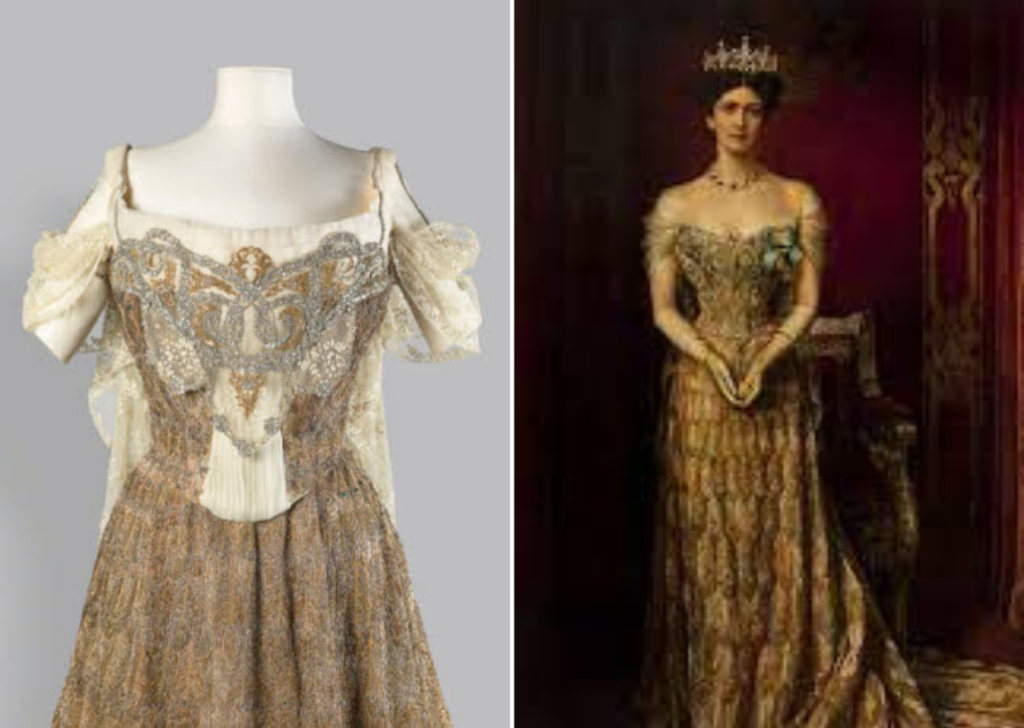 Portrait of Lady Mary Curzon Vicereine of India in her peacock dress for the Delhi Durbar, by William Longsdail, c. 1903; Source: National Trust Collection, Kedleston Hall, Eastern Museum and Art UK, LINK
Portrait of Lady Mary Curzon Vicereine of India in her peacock dress for the Delhi Durbar, by William Longsdail, c. 1903; Source: National Trust Collection, Kedleston Hall, Eastern Museum and Art UK, LINK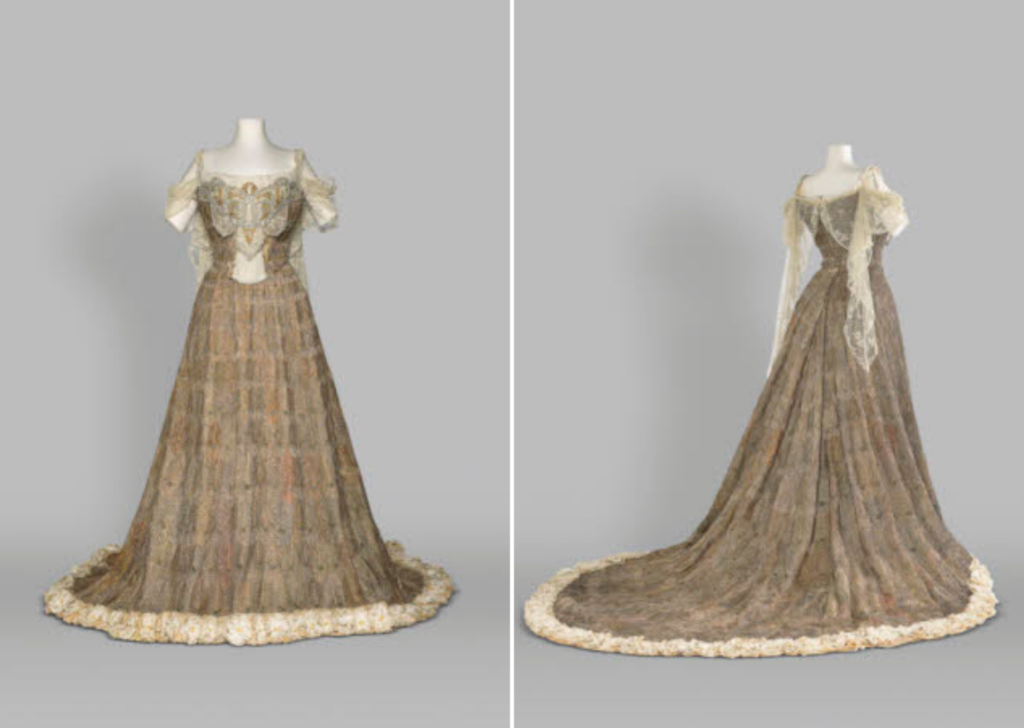 Peacock dress of Lady Mary Curzon, Vicereine of India (font, back and closeup), by Workshop of Kishan Chand and House of Worth, c. 1900-02; Source: National Trust Collection and Kedleston Hall, LINK
Peacock dress of Lady Mary Curzon, Vicereine of India (font, back and closeup), by Workshop of Kishan Chand and House of Worth, c. 1900-02; Source: National Trust Collection and Kedleston Hall, LINK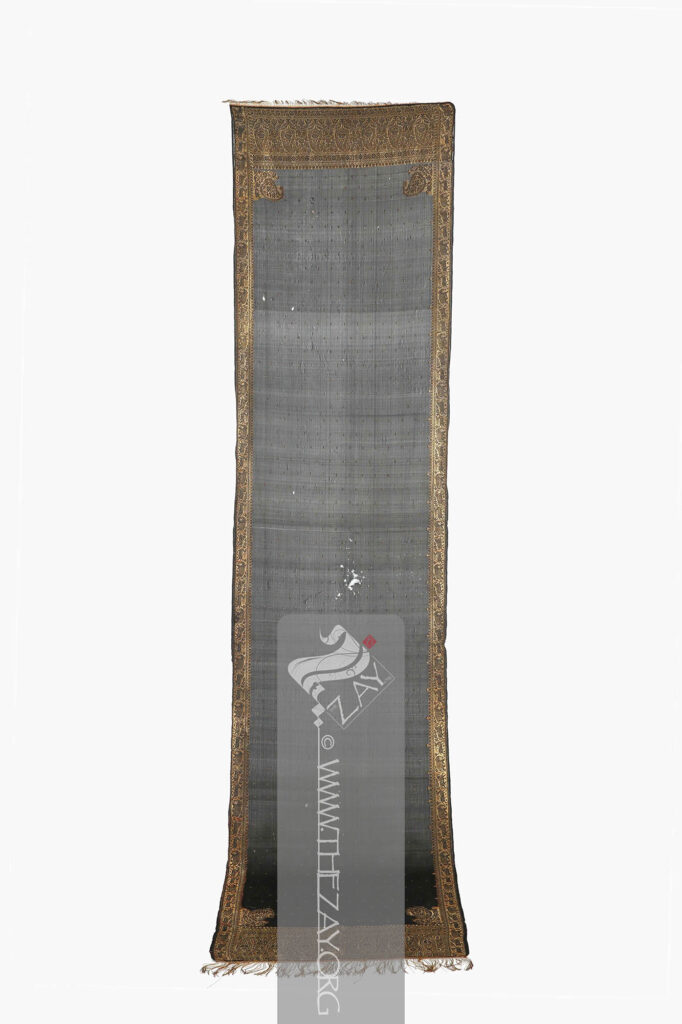 A grey silk brocade
Brocade: (Italian: brocco – twisted thread), is a richly decorative fabric woven with an intricate raised pattern. Its origins can be traced back to ancient China, where it was made for the imperial court. It later spread to Europe during the Renaissance and became popular in couture and decorative arts. scarf
Scarf: (English), usually a rectangular piece of cloth loosely worn over the shoulders, upper body and arms, and sometimes also over the head. with horse head and peacock motifs, Varanasi, c. 19th-century Acc No: ZI2020.500783 ASIA; Source: The Zay
Zay: (Arabic: costume, Pl. azyaā’), a set of clothes in a style typical of a particular country or historical period. Initiative, LINK
A grey silk brocade
Brocade: (Italian: brocco – twisted thread), is a richly decorative fabric woven with an intricate raised pattern. Its origins can be traced back to ancient China, where it was made for the imperial court. It later spread to Europe during the Renaissance and became popular in couture and decorative arts. scarf
Scarf: (English), usually a rectangular piece of cloth loosely worn over the shoulders, upper body and arms, and sometimes also over the head. with horse head and peacock motifs, Varanasi, c. 19th-century Acc No: ZI2020.500783 ASIA; Source: The Zay
Zay: (Arabic: costume, Pl. azyaā’), a set of clothes in a style typical of a particular country or historical period. Initiative, LINK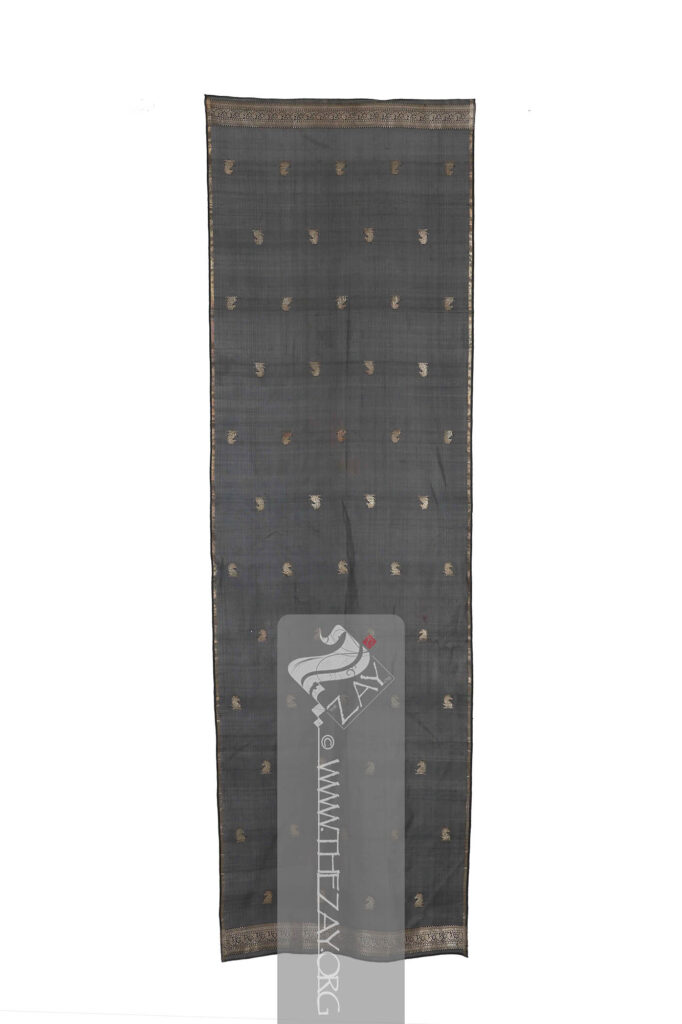 A black silk scarf
Scarf: (English), usually a rectangular piece of cloth loosely worn over the shoulders, upper body and arms, and sometimes also over the head. with paisley
Paisley: (Scottish Gaelic, Pàislig: a town in Scotland), often called buta
Būta: (Anglicized Persian: boteh – Pinecone shaped motif), known as paisley in English it is the almond or pinecone-shaped motif, especially in textiles. It is believed to have originated from the Cyprus tree a Zoroastrian symbol for life and eternity. In the current Indian context, however, it simply means motif., boteh, amli, or kalgi in the subcontinent and kazuwah in Arabic, is a Persian tear drop motif with a curved end specially in textiles. Its popularity and subsequent local production in 18th century at Paisley are responsible for its nomenclature., lotus, elephant and antelope motifs, Varanasi, c. 19th century; Acc No: ZI2020.500784 ASIA; Source: The Zay
Zay: (Arabic: costume, Pl. azyaā’), a set of clothes in a style typical of a particular country or historical period. Initiative, Link
A black silk scarf
Scarf: (English), usually a rectangular piece of cloth loosely worn over the shoulders, upper body and arms, and sometimes also over the head. with paisley
Paisley: (Scottish Gaelic, Pàislig: a town in Scotland), often called buta
Būta: (Anglicized Persian: boteh – Pinecone shaped motif), known as paisley in English it is the almond or pinecone-shaped motif, especially in textiles. It is believed to have originated from the Cyprus tree a Zoroastrian symbol for life and eternity. In the current Indian context, however, it simply means motif., boteh, amli, or kalgi in the subcontinent and kazuwah in Arabic, is a Persian tear drop motif with a curved end specially in textiles. Its popularity and subsequent local production in 18th century at Paisley are responsible for its nomenclature., lotus, elephant and antelope motifs, Varanasi, c. 19th century; Acc No: ZI2020.500784 ASIA; Source: The Zay
Zay: (Arabic: costume, Pl. azyaā’), a set of clothes in a style typical of a particular country or historical period. Initiative, Link